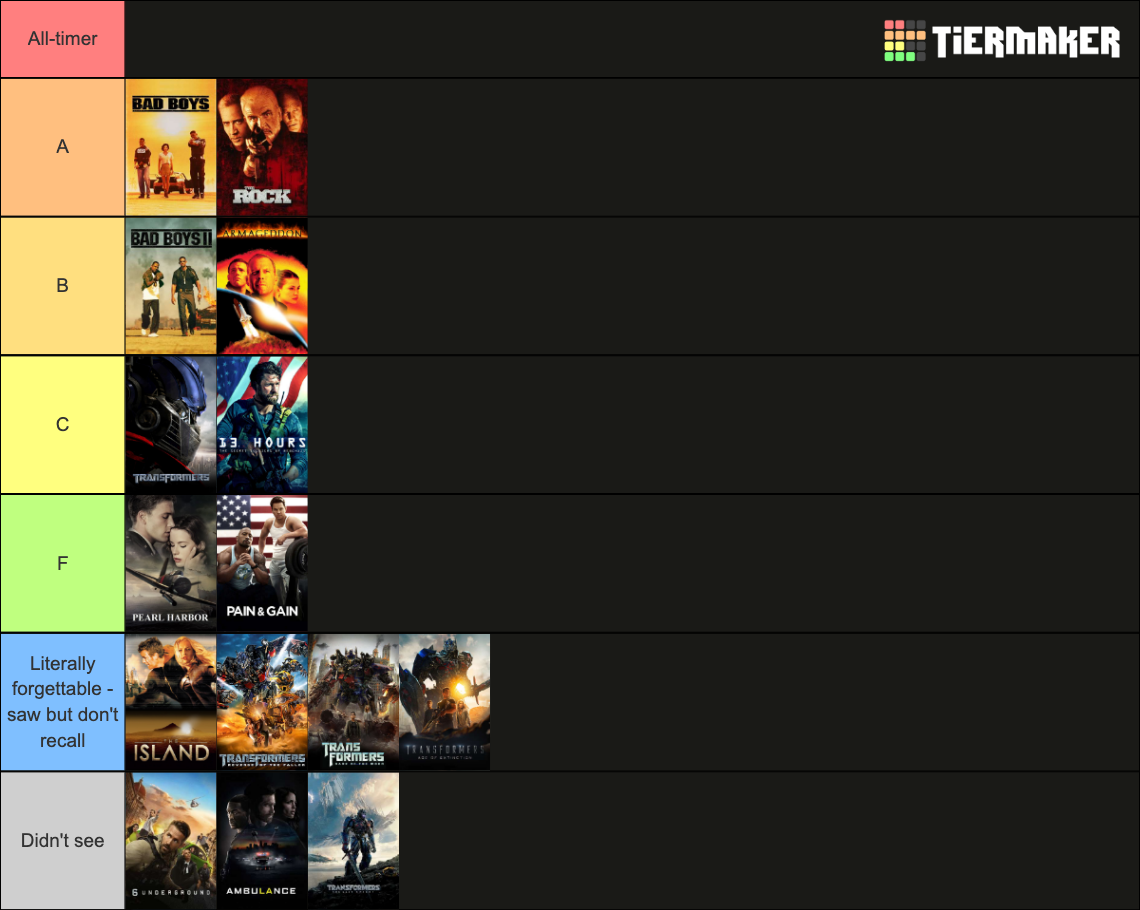Some people have an instinctive bias against Michael Bay movies.
I am not one of those people.
At the risk of shredding whatever credibility I have, let me go one step further: I like Michael Bay movies. Some of them. The good ones.
The problem: There are only a few good Michael Bay movies.
He's yet to produce a bonafide classic, and at this stage of his career, it's safe to assume he won't. Or can't—Pearl Harbor was his one attempt at a serious film, one that might shower him in Academy prestige, and that didn't exactly work out.

Bay got his start shooting music videos. He moved to film and quickly became famous for his unique style, which employs frenzied cuts, frenetic but confusing action sequences, and fiery finales. Story elements like character motivation and causation have no place in a Michael Bay film. He's got no time for nuance—he's too busy blowing shit up.
Michael Bay movies are 2 hour music videos. It's not so much coming full circle as it is never leaving home.
Michael Bay: I don't change my style for anybody. Pussies do that. ~ An Oral History of Michael Bay, GQ
Okay, Mike.
As someone weened on the music video genre, I don't view them as an inherently bad thing. Far from it! There was a hot minute in the late 80s/early 90s when music videos were the pinnacle of adolescent entertainment.
Teen culture has always had a tight relationship with music. Music videos offered something far more intimate. And edgy, because the videos all revolved around sex at some level.
Music videos told stories entirely through visuals. Most of them made no sense. They were flashy commercials meant to sell albums. That, as much as anything, explains the Gen X / Xennial relationship with media: As children, we watched cartoons that doubled as toy advertisements, and as teenagers we graduated to music videos which occupied the same space. It's little wonder so many of us have fond memories of actual commercials from that time—there was no real distinction between commercial and content. We were being sold to all the time.
Bay shot 3 music videos for Meatloaf, including the iconic 90s jam "I'd Do Anything For Love (But I Won't Do That)." Watching it, you see everything Bay would later become famous for.
The video starts with text on a screen:
"I have travelled across the universe through the years to find her. Sometimes going all the way is just a start."
We're immediately thrown into the action as police chase a lone figure on a motorcycle. This is our hero promised by the prologue, who apparently can easily travel the stars but can't escape 90s era police.
This sort of dichotomy is common to Michael Bay productions. The only way through is to shut off your brain and be swept away by sensory overload.
The chase ends at a creepy mausoleum, where our hero—who bears a shocking resemblance to Beast, of Beauty and the Beast fame—lures the police inside with the sound of his melancholy song and then runs them down with his motorcycle.
Later, we're treated to a nearly shot-by-shot recreation of the scene from Bram Stoker's Dracula where Keanu Reeves is seduced by Dracula's brides. Except in Bay's version, Keanu is instead the woman of Meatloaf/Beast's dreams and we get 4-way lesbian action. Our hero sits with his back to all the artful caressing, angrily cucked as his wives ravish his dream woman. After, in a rush of shame, he smashes every mirror in his dream house.
From there, things happen and we eventually arrive at a happy ending that doesn't really make sense, but you don't care enough to question it. The thrill ride is over, the lap bar is raised, time to get off.





